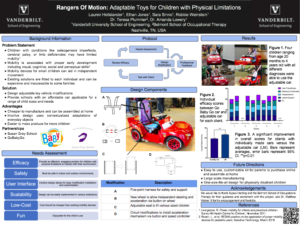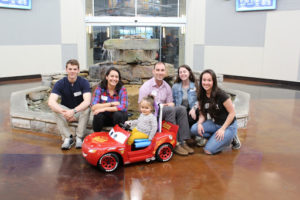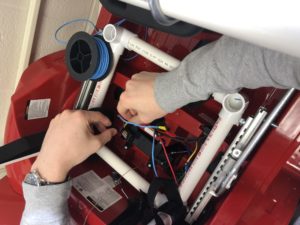Design Day is one week away! We have completed our poster as shown below.

We were able to test our device at a GoBabyGo build where 7 children were fitted for their individual toy cars. We were able to have 4 children ranging from ages 20 months to 4 years, all with different diagnoses and substantially different abilities, successfully use it, and speculate that 6 out of the 7 children would be able to efficaciously use our adjustable design. The data is presented in the poster, in which the children were scored on a scale of 1-5 in 5 categories of use in both their own, individualized car, and our adjustable car. We have shown improved benefit in our design as compared to the previous design, as well as proved ability to be used in multiple children. Parents and occupational therapists were very impressed with our design, noting that a car like ours would be more beneficial than the GoBabyGo car for their children as they grow and develop. Here are some photos from that day:






We are excited to get this car into the Susan Gray School where we anticipate that around 6 children will be able to benefit from it. See you at Design Day!


